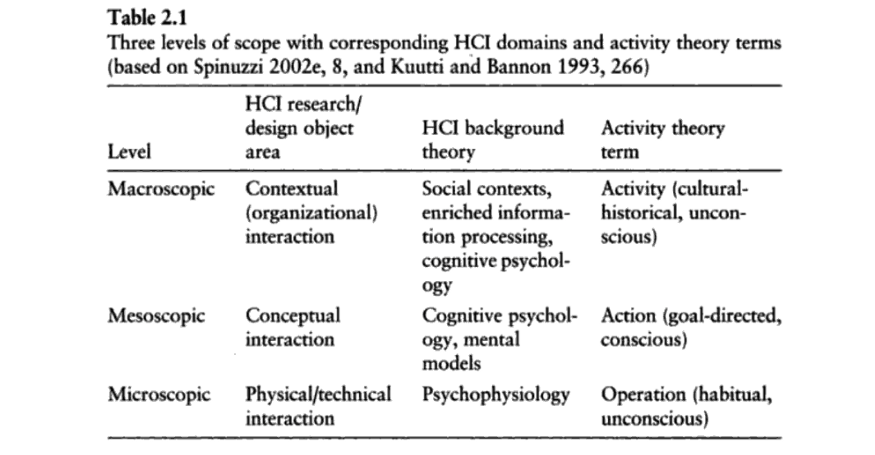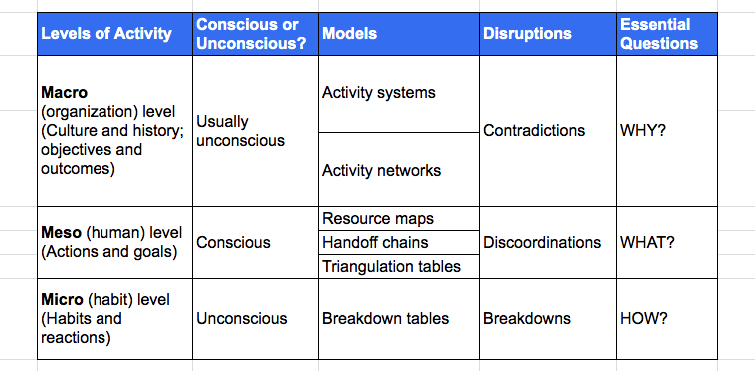Topsight: Three Levels of Scope [Activity Theory]
![Topsight: Three Levels of Scope [Activity Theory]](https://images.unsplash.com/photo-1633975645590-42ae66f9e6c3?crop=entropy&cs=tinysrgb&fit=max&fm=jpg&ixid=MnwxMTc3M3wwfDF8YWxsfDI3fHx8fHx8Mnx8MTYzNDE1NTE5Ng&ixlib=rb-1.2.1&q=80&w=960)
In recent years, activity theorists went beyond Leontiev’s theoretical scope and expanded activity theory to “activity system” and “activity network”. Following this trend, researchers developed new versions of a hierarchical structure of activity for theoretical purpose and empirical purposes. One version is Clay Spinuzzi’s “Three Levels of Scope”.
In 2003, Spinuzzi published a book titled Tracing Genres Through Organizations. In chapter 2 of the book, he introduced “three levels of scope” with the following chart. Based on three levels of activity and HCI researchers’ methods, Spinuzzi suggested “Macroscopic”, “Mesosopic”, and “Microsopic” for describing three levels of analysis for empirical research. He said, “These relationships are not typically examined — and are inherently difficult to examine — through single-scope approaches, which by definition privilege one level of scope over another and which take level of scope as foundational to the other levels. They lend little attention to how that level is constituted and made meaningful through what occurs at the other levels.” (p.29)

Spinuzzi also argued, “These perspectives are typically discussed as organizational (or contextual), conceptual, and technical layers (p.265). Furthermore, these layers are not typically integrated in human-computer research: each is studied separately, with its own theoretical assumptions, methodologies, and methods.” (p.29) Since Activity Theory provides a consistent conceptual framework for all three levels, Leontiev’s three-layers model is a great framework for guiding research and curating empirical data.
In 2013, Clay Spinuzzi published Topsight: A Guide to Studying, Diagnosing, and Fixing Information Flow in Organizations and introduced his research methodology and related tools. He still uses three levels of scope for Topsight, however, we have to notice that the “macro level of activity” refers to two models: Activity systems and Activity networks. The concept of activity network is not a part of Leontiev’s original theoretical framework, it was introduced by Yrjö Engeström’s in 1987.

If we consider the activity network as a new layer, the hierarchical structure of activity should expand from three levels to four levels:
- Activity Network
- Activity System
- Actions
- Operation
In fact, some activity theorists have argued there is a need to expand Leontiev’s three-level hierarchical structure to a four-level hierarchical structure. However, there are many versions of this kind of argument.
